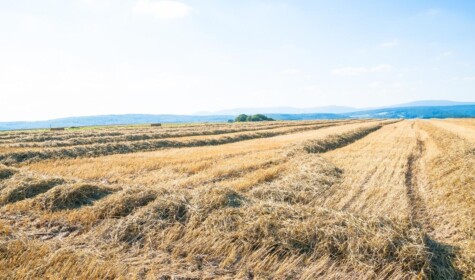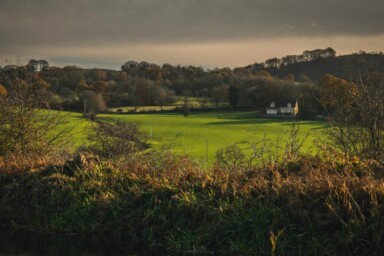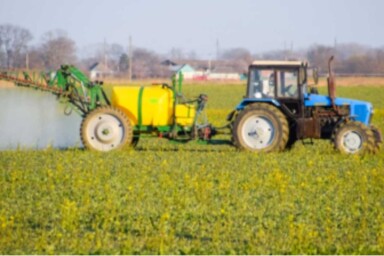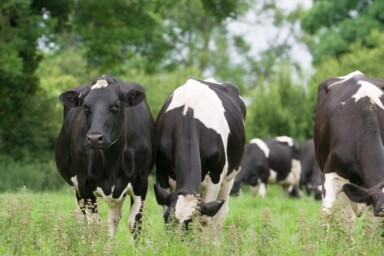As we consider what a post-pandemic world might look like, all eyes are now on our world leaders and how we confront the critical issue of climate change. Farmers, and the people they feed around the world, are on the front line of this issue. According to the FAO, 690 million people are already going hungry, making up 8.9% of the world’s population. In order to feed the globe’s growing population, which is estimated to be hitting 9.7 billion in 2050, we need to produce 70% more food than we already do – though cutting food waste must be weighed into this. This is a challenge in its own right, but add climate change related droughts, floods, pests, soil salination and disease into the mix and the situation becomes treacherous. Whilst mitigating climate change should still be at the top of our priority list, extreme weather events are already here. We are now caught in a race against time and those who don’t adapt may find themselves on the losing side. The question is, how can farmers do this?
The importance of diversity
As extreme weather events become the norm, there needs to be a fundamental shift from a focus on productivity to resilience. Following the Green Revolution in the 1960s, the world has focused in on an ever-dwindling number of crops. There are over 200,000 plant species that humans can eat and yet less than 20 provide 90% of the food we eat, with wheat, maize and rice at the top of the list. That leaves us with a lot of other options.
On paper, it might make economic sense to produce a uniform crop that grows faster, bigger and better, but we’re in danger of putting all our eggs in one basket. These staple crops, which are planted as monocultures, are not bred for their hardiness to climate variability but for their high yield, leaving them vulnerable to warming temperatures and associated disease, repeated droughts and flooding. These modern hybrid varieties also require high chemical inputs to succeed, meaning they come at a high cost to the environment and are more expensive to use. Take rice, for example, a notoriously thirsty crop which feeds over half the world’s population and provides one fifth of the world’s calories. As weather patterns become increasingly erratic and droughts more common, half the world’s staple diet could be under threat. In India, ecologist Dr Debal Deb has been working for the last three decades to save indigenous rice seed diversity which, following the Green Revolution, plummeted from around 100,000 varieties to just 7000. So far Dr Deb has saved 1400 varieties of rice, all of which have different properties to withstand changing temperatures, water and soil conditions, opening the door to far greater resilience to climate shocks than the homogenous modern hybrid varieties.
In America, Vilicus Farm in Montana is taking a similar approach. Unpredictable weather patterns and less moisture have meant that Anna Crabtree-Jones and her husband Doug Crabtree have been looking at how to adapt their farm to protect them against future shocks, using more regenerative farming practices. ‘One of our strategies is to double down on diversity,’ Anna explained in an interview for the Sustainable Food Trust (SFT). ‘We seeded 20 different things last year, so our farm looks really different from the air than our neighbours.’ You could say they are taking the long view, with a seven-year crop rotation, alongside looking at adding more pasture grazing to improve soils and planting perennial native habitat pollinator plants in between strips of crops to reduce wind and snow damage.
Can science save us?
Since leaving the EU, Britain is looking at relaxing the rules on genome editing. This means small changes to a plant gene can be made, potentially increasing a plant’s resilience to varying weather patterns. In a recent commentary in the Guardian, Nick Talbot, Executive Director of the Sainsbury Laboratory suggested that Britain should be extending the relaxation of the rules to GM, arguing that traditional plant breeding takes too long and ‘we must act more quickly given the magnitude of the climate emergency’, growing more food on less land and potentially reducing the need for chemical inputs by using more disease resistant plants. Talbot argues that both GM and gene editing are safe and are ‘vital in achieving net-zero carbon agriculture within the critical timeframe’.
In contrast, organisations including the SFT argue that gene editing will reduce biodiversity where ‘heritage seeds and species [are] shunned in favour of a few homogenised, high yielding varieties’, which may have the opposite effect. Writing recently for the SFT, Liz O’Neill from GM Freeze stated that ‘Changing plant and animal genes can’t fix the food chain because the things that are broken have nothing to do with genetics.’ Monocultures and years of poorly managed, intensively farmed land have created catastrophic soil degradation, soil salination from excessive irrigation and ground water extraction, along with biodiversity loss – 40% of UK soils fall under this category. We ignore the soil, a vital carbon sink holding approximately 80% of the world’s carbon, at our peril. What’s more, without good soil, how can we grow food to feed the growing population?
The role of sustainable farming
Rather than look for quick fixes, there is a growing sense in some fields of study that we should take a more holistic approach, adopting agroecological practices to manage the land and harnessing the knowledge of the people who farm it. Sub-Saharan Africa, despite contributing only 2% of the world’s greenhouse gases, is the most vulnerable region in the world to climate change. It is also one of the poorest, where one in four are malnourished. Without sustainable adaptation and solutions, the region is set to pay a high price for the world’s unsustainable consumption patterns. Agriculture in the region is reliant on rain water and even if global warming were to stay below 1.5 degrees, heatwaves would increase disease and reduce the land suitable for growing the staple crop maize by 40%. In sub-Saharan Africa, 50 million people live in areas where severe drought has catastrophic effects on cropland and pastureland once every three years, and erratic weather patterns mean planning when to plant and harvest is increasingly difficult.
Despite a trend towards more technological and yield driven agriculture in this region, there is now a move towards more sustainable and locally grown agriculture. The charity Send A Cow is working with communities in six different countries to support farmers in adopting agroecological farming practices which are both good for the environment and resilient to changes in climate. At the heart of this is supporting the use of diverse, drought resistant plant species and techniques such as water harvesting, composting, tree planting and animal husbandry, with no need for GM or chemical inputs. Farmers are encouraged to take a whole farm approach, using manure from livestock on the land which avoids the use of expensive and damaging fertilisers and improves the moisture retention of the soil. They are also incorporating a push-pull system to combat Striga weed and the Stemborer moth, a major threat to maize crops. Farmers are learning how to intercrop drought resistant varieties of the legume Desmodium with maize plants and planting Napier grass around the edges. The Desmodium works as a repellent or ‘push’ crop for the Striga weed and the moth, while the moth is also ‘pulled’ to the Napier grass. The method is low cost and requires no chemicals at all.
Collaboration is key
What is clear, is that time is of the essence and that, perhaps, it’s time for a more collaborative approach. ‘By combining the benefits of ecologically sensitive organic production with innovation in crop improvement,’ Nick Talbot writes ‘we could develop powerful holistic solutions for sustainable agriculture.’ Whether we agree with gene editing or not, what is apparent is that there urgently needs to be a global conversation that engages all parts of the agricultural spectrum.‘We’re going to have to have collective action on this,’ says Anna from Vilicus Farm. ‘I honestly think that we’re looking for some radical change.’ Critically, the emphasis needs to shift to a much more localised and diverse approach where small-scale farmers and their knowledge are prized more highly, as it’s these people who may hold the answers to future food production in a warming world.






